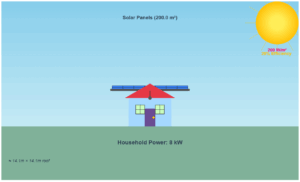Physics Questions Simulation
Question 5a: Rocket Casing Burning
The casing of a rocket in flight burns up due to friction. At whose expense is the heat energy required for burning obtained? The rocket or the atmosphere?
Explanation: The heat energy required for burning the rocket casing comes from the rocket's kinetic energy. As the rocket moves through the atmosphere, friction converts some of its kinetic energy into heat, causing the casing to burn up. This demonstrates the principle of energy conservation - energy is neither created nor destroyed, only transformed from one form to another.
Question 5b: Comet Orbit
Comets move around the sun in highly elliptical orbits. The gravitational force on the comet due to the sun is not normal to the comet's velocity in general. Yet the work done by the gravitational force over every complete orbit of the comet is zero. Why?
Explanation: The gravitational force is a conservative force. Over a complete orbit, the work done by a conservative force is zero because the positive work done during one part of the orbit (when the comet is moving toward the sun) is exactly canceled by the negative work done during another part (when the comet is moving away from the sun). This is a fundamental property of conservative force fields.
Question 5c: Satellite Orbit Decay
An artificial satellite orbiting the earth in very thin atmosphere loses its energy gradually due to dissipation against atmospheric resistance, however small. Why then does its speed increase progressively as it comes closer and closer to the earth?
Explanation: As the satellite loses energy due to atmospheric drag, its orbit decays and it moves closer to Earth. According to Kepler's laws, as the orbital radius decreases, the speed must increase to conserve angular momentum (v ∝ 1/r). The gravitational potential energy converts to kinetic energy, resulting in higher speed. This is an example of the virial theorem in action, where a decrease in potential energy leads to an increase in kinetic energy.
Question 5d: Work Done Comparison
In Fig. 6.13(i) the man walks 2 m carrying a mass of 15 kg on his hands. In Fig. 6.13(ii), he walks the same distance pulling the rope behind him. The rope goes over a pulley, and a mass of 15 kg hangs at its other end. In which case is the work done greater?
Explanation: When carrying the mass, the force is vertical while displacement is horizontal, so no work is done against gravity (W = F·d·cos90° = 0). When pulling the mass, the vertical component of tension does work against gravity as the mass is lifted slightly. Therefore, more work is done in the second scenario. This illustrates the importance of the angle between force and displacement in calculating work done, as described by the dot product in physics.



